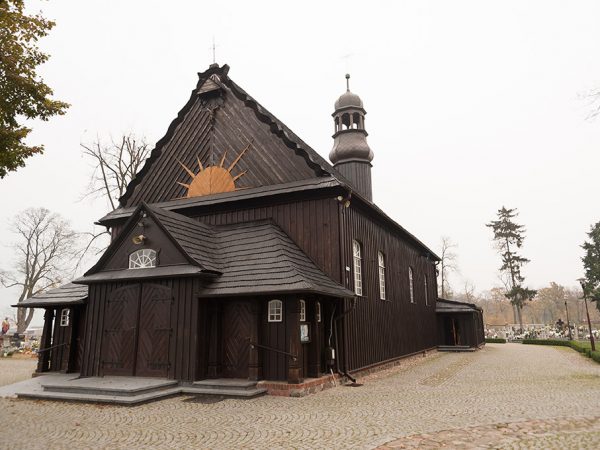Wooden monuments
Our Lady of the Snows
On the main altar, Madonna with Child was portrayed in the style of Our Lady of the Snows. It is the most popular and eagerly copied image of St. Mary dating to the 12th century. It is kept in the basilica Santa Maria Maggiore in Rome. The nickname “of the Snows” refers to a legend which says that during a hot August day in 352 one of the seven Roman hills, the Esquiline, was covered… in snow. In this miraculous way St. Mary picked a spot for buildning of Her new church. The founders were a couple who wanted a child. For their devotion they were blessed with offspring.
- Small figures of the founders can be seen at St. Mary’s sides. They wanted to immortalize themselves. The hierarchy of significance is used in the picture according to which the size of the figures reflects their importance. Who was the married couple depicted in the painting? Members of the local nobility? Maybe they also awaited children? Perhaps the founding of the picture is the effect of their trust and hope for help in the solution of the problem?
- The date of the painting: Anno Domini 1637.
- The signature of the artist: ‘AS’.
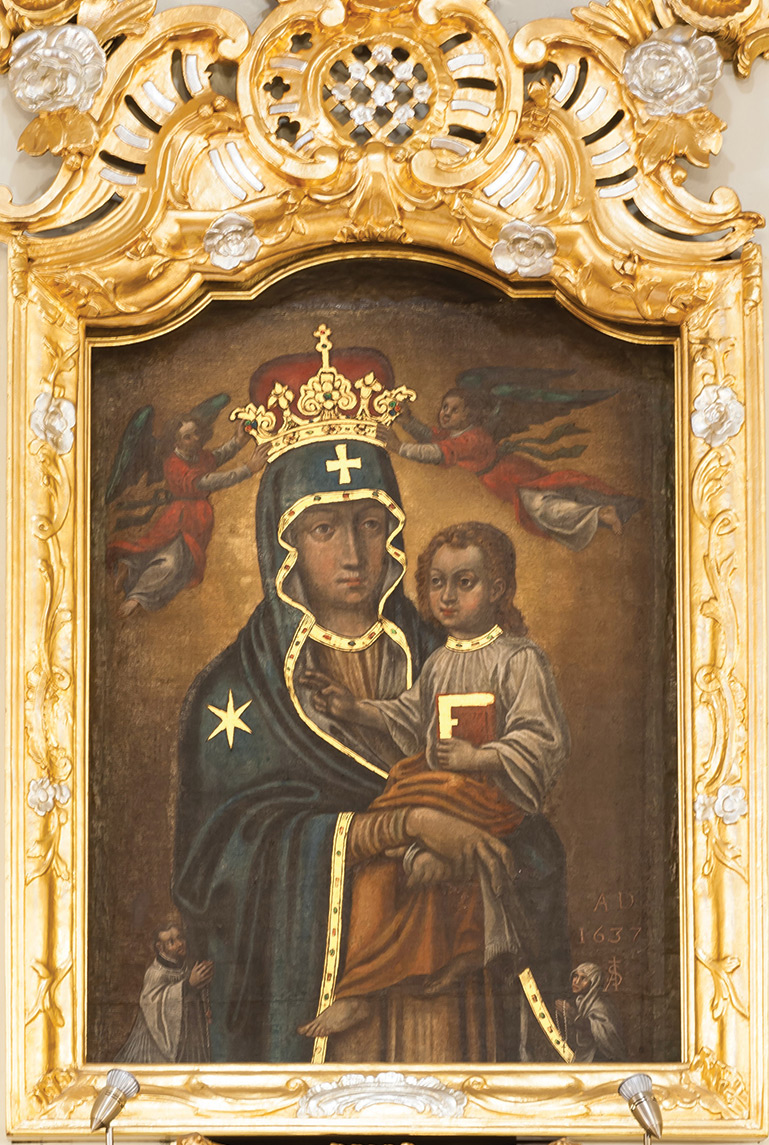

Portraits with the child
In the panel of the right side altar there are images of St. Anthony of Padua and St. Joseph. Each of the saints is holding Baby Jesus in his arms.
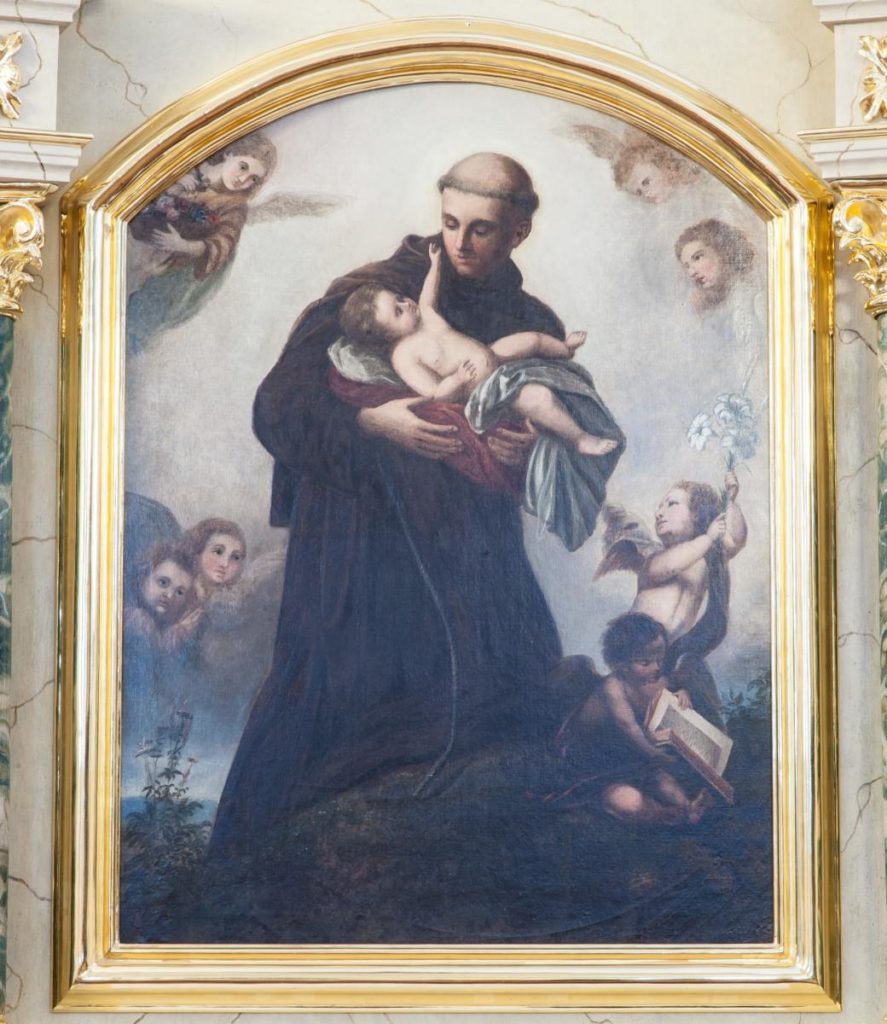
St. Anthony of Padua lived at the turn of 12th and 13th centuries and he was very distinguished Franciscan preacher who possessed a gift of speech. He used an extremely vivid and imaginative language while speaking to the faithful. He was appreciated by the Pope Gregory IX among others, who would call the Franciscan’s sermons a “precious repository of Holy Scripture”. He is presented with Baby Jesus on his arm as Jesus visited him at night and confirmed of His love. The saint is remembered on June 13. It is worth to address him when we lose something and cannot find it. His support is necessary as St. Anthony is the patron saint of the people and things which are lost.
There is a clear eye connection between St. Joseph and Baby Jesus. Perhaps they are talking about the meaning of the text which has been just ready out by Joseph and to which Baby Jesus is pointing with His hand.
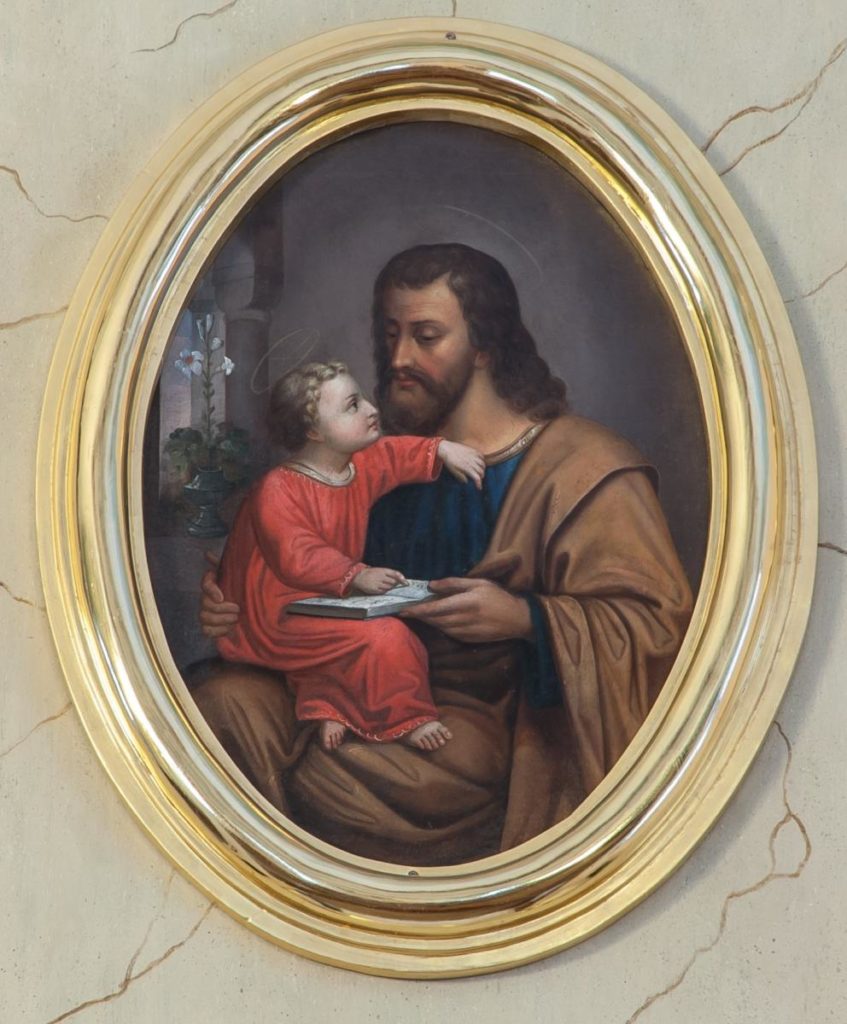
Madonna among flowers
The interior of the church is decorated with a polychromy from 1929 by prof. Wiktor Gosieniecki in a geometric-symbolic style. On the ceiling there is a “plafond” – a big, central, oval decoration with an image of Mother of God with Child. Madonna and Jesus are surrounded by foliate ornament, where among the flowers one can spot poppies, cornflowers or ears of grain. Medallions with descriptions of virtues and privileges given by God to Madonna are put in the festoon. The virtues are mentioned in the Litany of the Blessed Virgin Mary, said mentioned during May services. Also meadows covered with flowers and ears of grain are strictly connected with Mary’s cult – they can be found in the songs which praise the Mother of God and in the tradition of making wreaths.
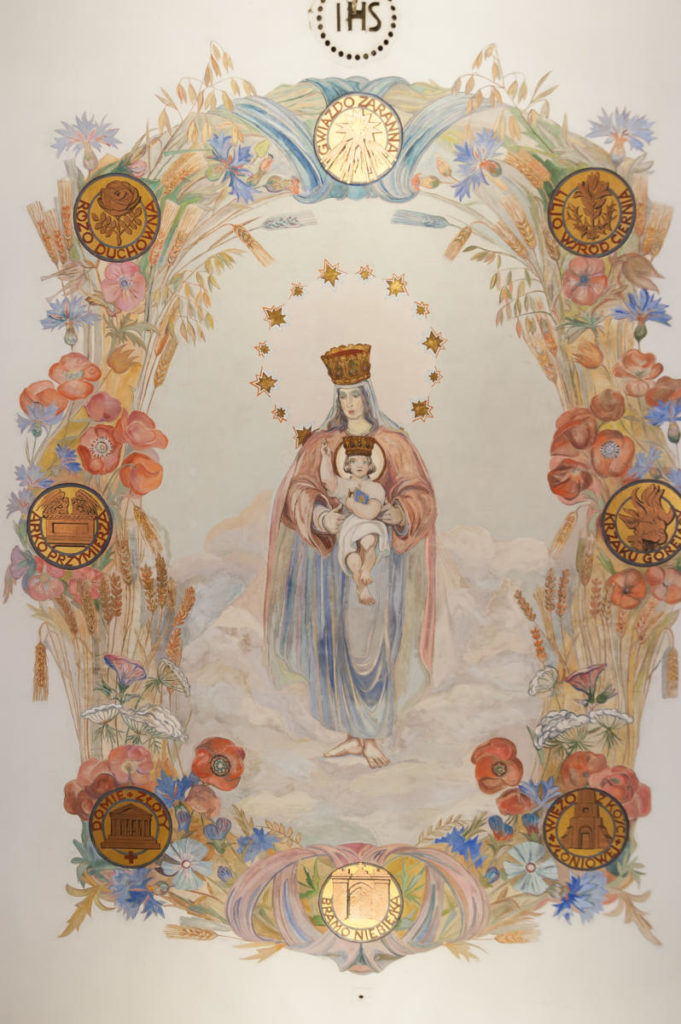
„The one who sings, prays twice” - St. Augustine
On a gallery (a balcony) decorated with flowery openwork walls there is a historic pipe organ dated to the end of the 18th century. It was integrated into the balustrade: the pipes “blend” into it to create a unified whole. Thanks to this the instrument of a 7-note scale (register), one hand manual (keyboard) and pedal keyboard, seems to enter the interior of the church. The music which fills the building magnificently completes the singing of the faithful. The multitude of voices, human and instrumental, allows to fully experience the Eucharist, for the greater glory of God.
The organs have played for the people of Ociąż for almost 250 years and they accompany them in various celebrations. They sound happy during Christmas, weddings and baptizms, and sad during the Holy Week and funerals.
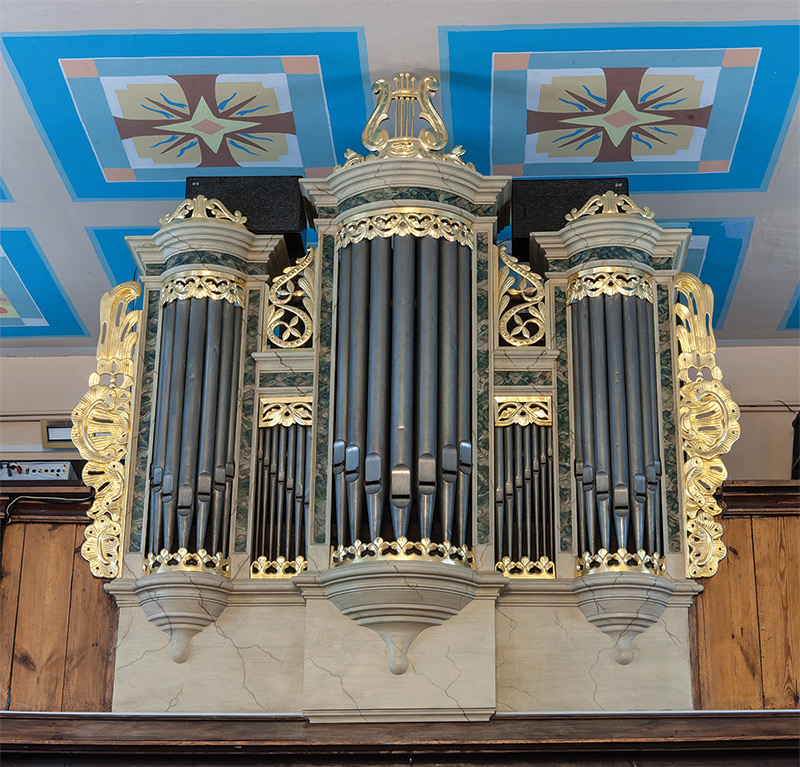

- Sima (S-shaped convexo-concave profile) and floral motifs. Characteristic for the Rococo style: rocaille decoration)
- Biblical King David – the author of psalms – played the lyre.
- Floral openwork wall frieze.
“It is good to give thanks to the Lord, to sing praises to your name, O Most High; to declare your steadfast love in the morning, and your faithfulness by night, to the music of the lute and the harp, to the melody of the lyre.”
The Book of Psalms, Psalm 92
Indulgences
8 września (Narodzenia Najświętszej Maryi Panny) oraz 13 czerwca (św. Antoniego Padewskiego)





